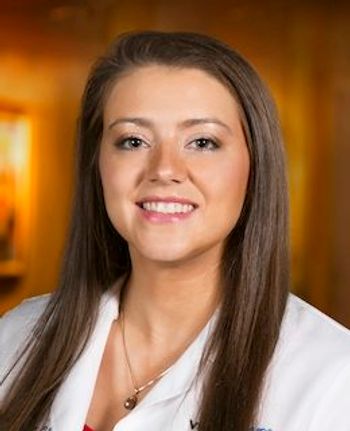
Curbing myopia onset in children with diversified segmental defocus optimization lenses
The primary study outcomes were the cumulative incidence rate of myopia, with myopia defined as an SER −0.50 diopter (D) or less and the percentage of participants who had a fast myopic shift that was defined as a spherical equivalent myopic shift of 0.50 D or greater over the course of 1 year.
Chinese researchers recently reported that daily use of diversified segmental defocus optimization (DSDO) spectacle lenses delays the onset of myopia among children without myopia,1 according to lead author Yuchang Lu, MD.
The authors are from the following institutions in Beijing: Department of Ophthalmology, Peking University People’s Hospital; Institute of Medical Technology, Peking University Health Science Center; Peking University International Hospital; Beijing Key Laboratory of Ocular Disease and Optometry Science, Peking University People’s Hospital; and College of Optometry, Peking University Health Science Center.
Lu and colleagues expressed concern about the growing prevalence of myopia worldwide and pointed out that effective strategies are needed to prevent early-onset myopia.
To that end, they evaluated how well DSDO lenses would help curb the onset of myopia in children with or without the use of 0.01% atropine.
Myopia study design
The investigators conducted a 1-year, randomized, placebo-controlled, double-masked clinical trial (Chinese Clinical Trial Registry:
The investigators recounted that the study participants were randomly assigned 1:1:1 to use DSDO spectacles with placebo eye drops (the DSDO group), DSDO spectacles with 0.01% atropine eye drops (the DSDOA group), or single-vision spectacles with placebo eye drops (the control group).
The primary study outcomes were the cumulative incidence rate of myopia, with myopia defined as an SER −0.50 D or less and the percentage of participants who had a fast myopic shift that was defined as a spherical equivalent myopic shift of 0.50 D or greater over the course of 1 year. The secondary study outcomes included changes in the SER, axial length, and subfoveal choroidal thickness.
Intervention results
A total of 450 children were randomly assigned initially as follows. The DSDO group included 77 males (51.3%); mean ± standard deviation (SD) age, 7.05 ± 0.12 years; the DSDOA group: 73 males (48.7%), mean ± SD age, 7.02 ± 0.14 years; and the control group: 78 males (52.0%) mean ± SD age, 7.01 ± 0.11 years. Of the 450 children, 370 (82.2%) completed the study (ie, 121 in the DSDO group, 125 in the DSDOA group, and 124 in the control group).
The investigators reported that the 1-year cumulative incidence rates of myopia in the DSDO, DSDOA, and control groups were, respectively, 5.8% (7/121), 4.8% (6/125), and 15.3% (19/124), and the respective percentages of participants in those groups with a fast myopic shift after 1 year were 15.7% (19/121), 9.6% (12/125), and 42.7% (53/124).
“Both the DSDO and DSDOA groups showed significantly lower 1-year cumulative myopia incidence rates,” they said. Compared with the control group, in the DSDO group, the difference was 9.5% (95% confidence interval [CI], 1.9-17.5; P = 0.02). Compared with the control group, in the DSDOA group, the difference was 10.5% (95% CI, 3.3-18.4; P = 0 .006).
Regarding myopic shift, compared with the controls, in the DSDO group, the percentage of patients with a fast myopic shift showed a difference of 27.0% (95% CI, 16.1-37.3; P < .001). In the DSDOA group, compared with the controls, the difference was 33.1% (95% CI, 23.1-42.8; P < .001). No significant differences were observed between the DSDO and DSDOA groups.
The authors commented on their results. “In this randomized clinical trial that included 450 children aged 5 to 12 years without myopia, the 1-year cumulative incidence rates of myopia were lower in the DSDO and DSDOA groups compared with the control group. No differences in the delay of onset of myopia were seen between the DSDO and DSDOA groups in the children without myopia,” they said.
Lu and colleagues concluded, “These data suggested that daily use of DSDO spectacles delays the onset of myopia among children without myopia, supporting DSDO spectacles without atropine as an alternative preventive method for children without myopia if supported by a longer follow-up and replication by others.
Reference
Lu Y, Yang X, Zhou J, et al. Diversified Segmental Defocus Optimization Lenses with and without atropine for myopia prevention. A randomized clinical trial. JAMA Ophthalmol. 2025; published Online July 10. doi:10.1001/jamaophthalmol.2025.2072
Newsletter
Want more insights like this? Subscribe to Optometry Times and get clinical pearls and practice tips delivered straight to your inbox.


















































.png)


